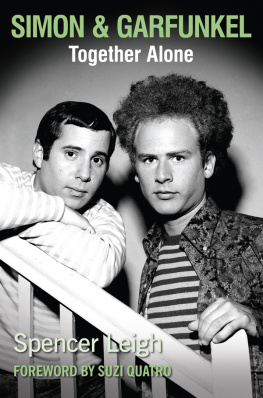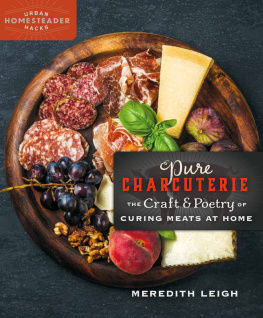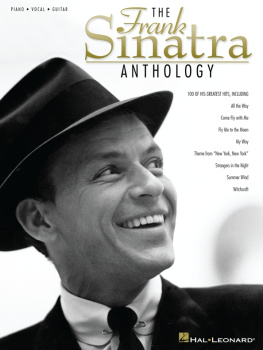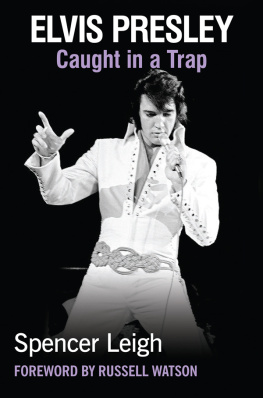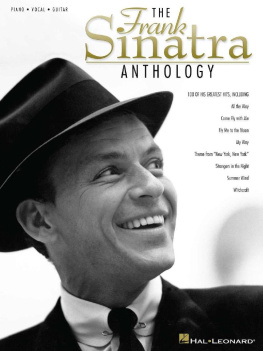SIMON & GARFUNKEL
Together Alone
Spencer Leigh

Simon and Garfunkel were a team.
I always knew that.
Im not so sure Paul did.
Art Garfunkel, 1998
Acknowlegments
My thanks to Ben Coker, David Charters, Fred Dellar, Andrew Doble, Peter Grant, Patrick Humphries, Mick OToole and Sue Place. Thanks to the various music magazines of the day including Disc, Melody Maker, New Musical Express (NME) and Record Mirror. Im very grateful to Andy Peden Smith for suggesting that my 1973 book Paul Simon: Now and Then should be updated and here it is, eventually rewritten. Love as always to my wife, Anne we met through the first edition of this book in 1973 and are still together.
Contents

Suzi Quatro
Foreword
Simon & Garfunkel, wow... Immediate vivid memories of being fourteen, trying to find out who I am, and discovering this wonderfully unique duo who somehow spoke to me. I was hooked with The Sound of Silence, but the one that really reached in and spoke to me was I Am a Rock. I had just started my own career in my first all-girl band, and was feeling like a misunderstood artist. Funny, I still feel like that now even after fifty-two years in the business! Simon & Garfunkel gave me a lifeline.
Being a singer/songwriter/musician, I dive deep into the artists that I like, so that I know every single breath on every single record. As I did with Dylan, another big love of mine. For me, Simon & Garfunkel are the melodious part of the same genre.
For some years after the Everly Brothers happened, there was not another harmony match that was so perfect, and then along came these two guys. Their voices fit perfectly together, and Arts high notes made some of the poignant messages in the songs a little bit easier for me to take, being a highly sensitive teenager.
Their version of Silent Night crossed with a news bulletin was a brilliant idea Say no more!
Simon & Garfunkel have been a huge part of the soundtrack of my life. Thank you for the music, boys, and I have enjoyed reading about you. Your story here has been told with sensitivity and accuracy, as is Spencers book I am reading on Frank Sinatra.
With love and respect,

Preface
New Books For Old
In 1973 I wrote Paul Simon: Now and Then, published by a small Liverpool-based company, Raven Books. It sold 8,000 copies but was not reprinted or kept up-to-date. Copies of it now are sold at silly prices, possibly because Paul Simon completists want it and because it is an early example of rock biography.
As I kept getting emails about it, I wondered if it could be reissued as an eBook. When I read the text for the first time in thirty years, it wasnt as bad as I suspected but it contained some dodgy opinions. Writing about Mother and Child Reunion, I dismissed the whole of reggae music, which surprised me as I thought I had loved reggae from the word go. There were mistakes I had followed an item in the New Musical Express which said that Paul Simon and Carly Simon were related when they werent. There was little first-hand research and outside of a few British folkies, I hadnt spoken to anyone.
Its big plus was that I had gone through the British musical press and found numerous interviews with Simon and Garfunkel and so I had their thoughts on most matters.
So, yes, this is the reissued Paul Simon: Now and Then, but only marginally so. Simon & Garfunkel: Together Alone is much more a new book than an old one. Mostly this is a chronological telling of the story of Simon and Garfunkel, both together and alone. As I was writing (or rewriting) it, it did strike me that there are themes that could be separate studies. Ive done my best with their early years around the Brill Building but it would need their commitment to sort out their full involvement with the pop singles of the late 50s and early 60s; then there is their deep affection for the Everly Brothers and the fact they have sung so much of Songs Our Daddy Taught Us; there is Simons on-off relationship with Bob Dylan which is far more on than most people imagine; the strong Christian imagery in Simon & Garfunkels songs and choice of material throughout the whole fifty years, much more than references to Judaism. A book could be written on the artists who have covered Paul Simons songs and how they have treated them.
It has been great to spend time with their recordings. Phrases from their songs pop into my head all the time and American Tune seems to be on repeat in my head. Their songs work on so many levels and even when the meanings are not clear, they still sound stunning.
Early on, Simon and Garfunkel realised two things. Firstly, the world liked them working together. Secondly, they didnt.
Spencer Leigh
July 2016
CHAPTER 1
Born at the Right Time
Although this book is largely propelled by the differences between Paul Simon and Art Garfunkel, and it would be a weaker story without that tension, they do have much in common.
They were born within a few miles and a few weeks of each other. Paul Frederic Simon was born on 13 October 1941 in Newark, New Jersey. The family tree goes back to Romania and includes tailors and shopkeepers, hence Simons reference to a previous lifetime in his song, Fakin It.
Simons grandfather was a cantor and his mother regularly attended services, ensuring that her son had a bar mitzvah. Simons parents nicknamed him Cardozo after a Supreme Court judge, Benjamin Cardozo, who never smiled. Indeed, Art Garfunkel recalls that his stern persona made him a great poker player at school.
Paul McCartney once said to Paul Simon, How come there are so many Christian references in your songs when you were brought up Jewish? It was a good observation: you can tell from Bob Dylans songs that he is Jewish but Simons songs are more likely to include Christian imagery.
Arthur Ira Garfunkel was born on 5 November 1941 in New York City, so they had Ellis Island and the Statue of Liberty between them. Right from the start, he looked distinctive. Look at the childhood photo of him playing baseball on his Lefty LP and youll know it couldnt be anybody else.
The two families did not know each other but Simons family was to move east to Forest Hills, part of the Queens district. The area is famed for its tennis club and concert stadium complex and playing at Forest Hills would be Simon and Garfunkels homecoming gig. The horseshoe stadium, designed that way for major tennis tournaments, could seat 16,000 so homecoming gigs were lavish affairs. The Beatles played there in August 1964.
Pauls father, Lou, was the family bass man as he played in various dance bands, while Pauls mother, Belle, was a schoolteacher. Lou played on The Garry Moore Show and Arthur Godfrey and His Friends. He was a bandleader too, but during the 1970s he switched to teaching and obtained a doctorate in linguistics.
Pauls brother, Eddie, was born on 14 December 1945. He now administers Pauls publishing and is his co-manager but he is a competent musician in his own right, and in both stature and looks he resembles his brother. In their publishing office in the Brill Building, they display their fathers double bass.

